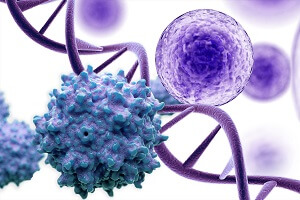
The arguments in favor of moving to a fully continuous bioprocess are clear: a perfusion bioreactor is typically more productive than one operating in batch mode, resin costs in clinical production may be significantly reduced by switching to a continuous capture step optimized for productivity, and fully continuous manufacturing can essentially eliminate idle and hold times. Understandably, these examples get the spotlight – but I think batch production is unfairly overlooked.
We actually see little data to demonstrate significant cost benefits from continuous biomanufacturing on the whole. In fact, much of the process economic modeling data published suggests that batch production many times may be more cost-efficient. In my experience, productivity benefits identified for individual process steps rarely convert to cost savings of the same magnitude overall. Productivity benefits for the perfusion reactor are offset by the higher media consumption. Resin consumption benefits from continuous capture are, in commercial manufacturing, reduced to the advantage of overloading. Savings from a reduction in process size may be offset by the need for more sophisticated instrumentation, which in combination with longer run times, may increase risk of failures – this should also be factored into the total cost equation.
But what about full usage of equipment in continuous mode? Wouldn’t this tip the scale to increased cost benefits? In reality, even though equipment may be used close to full time in continuous manufacturing, it may not be used to its full capacity because the productivity for every process step is determined by the bioreactor output. Therefore, the process steps following the reactor must be dimensioned to cope with maximal reactor output, plus a safety margin to handle variability. But they are often limited to run at the productivity dictated by the current reactor output. In contrast, idle times and scheduling in disconnected processing reduce equipment time usage, but allow for full productivity during operation.
All in all, given the built-in complexities and interdependencies in biologics production, we can’t so easily declare continuous the winner when it comes to cost.
To complicate things further, in addition to production costs, a number of other factors may substantially impact the business case when choosing a production mode. In process development, for example, a continuous setup could provide benefits in terms of reduced scale-up efforts. By choosing a scale-out strategy rather than scale-up, it may be possible to run the same process scale from early clinical production to commercial manufacturing, saving development costs. But, with this strategy, is there a risk of reducing the benefits of scale in the production setting? And given the more challenging process development effort typically required for setting up a continuous process, how do you know when to implement continuous production for a molecule? What is the strategy? Should you invest in early clinical development, despite the high probability that the molecule will not make it to market – or should you hold off until late-stage development, risking a delay in time-to-market and associated loss of revenue? Additional considerations include impact on buffer management and the potential for production transfer options to be impacted by choice of production mode, making it more difficult or expensive to source capacity. All of these questions must be addressed prior to a strategic decision around preferred production mode.
Among my responsibilities at Cytiva, and one of the most enjoyable parts of my job, is working with customers to create data that provide a clearer picture of the pros and cons for continuous manufacturing. In cases where continuous manufacturing has clear benefits to product quality or yield, such as for labile molecules or when there is a very large difference in productivity between the perfusion and batch cell lines, it is easy to see the cost benefits of continuous manufacturing. For other molecules, it may be far from a given – we cannot assume that either production mode will be a home run for every application. In my view, we should keep an open mind to the solutions that best meet our individual needs and objectives.
GPEx® Lightning is a fast, flexible way to shorten the path to production of phase 1 material. During this talk, we share the latest data leveraging GPEx® Lightning to generate highly stable, highly productive cell pools.

Plasmid DNA is a critical raw material for cell and gene therapies. Discover the importance of having an integrated partner like Catalent Cell & Gene, and how we can keep your development and manufacturing needs on track and on schedule





